
Durbuy, the smallest city in the world, as amusement parc
Entrepreneur Marc Coucke wants to turn the charming small Belgian city Durbuy, once the smallest city in the world, into a theme parc.
Durbuy
The smallest city in the world, bigger than Disneyland. These are the plans made by Marc Coucke for Durbuy. Durbuy is a tourist destination in the province of Luxembourg, in the south of Belgium, that is well-known mainly because of its romantic and charming aesthetics. Walking through the streets one could think that time has stopped and has frozen the town in a modern medieval look. This is because of the castle towering over the town and the narrow cobbled streets that lead to it.
Some of the oldest buildings in Durbuy date from the 17th and 18th century which add value to the ‘traditional’ and ‘historical’ image of the town. The surrounding nature valorizes it even more; all around the town are open fields, forest, rocks and the Ourthe river which encircles it (Ville de Durbuy, 2019).
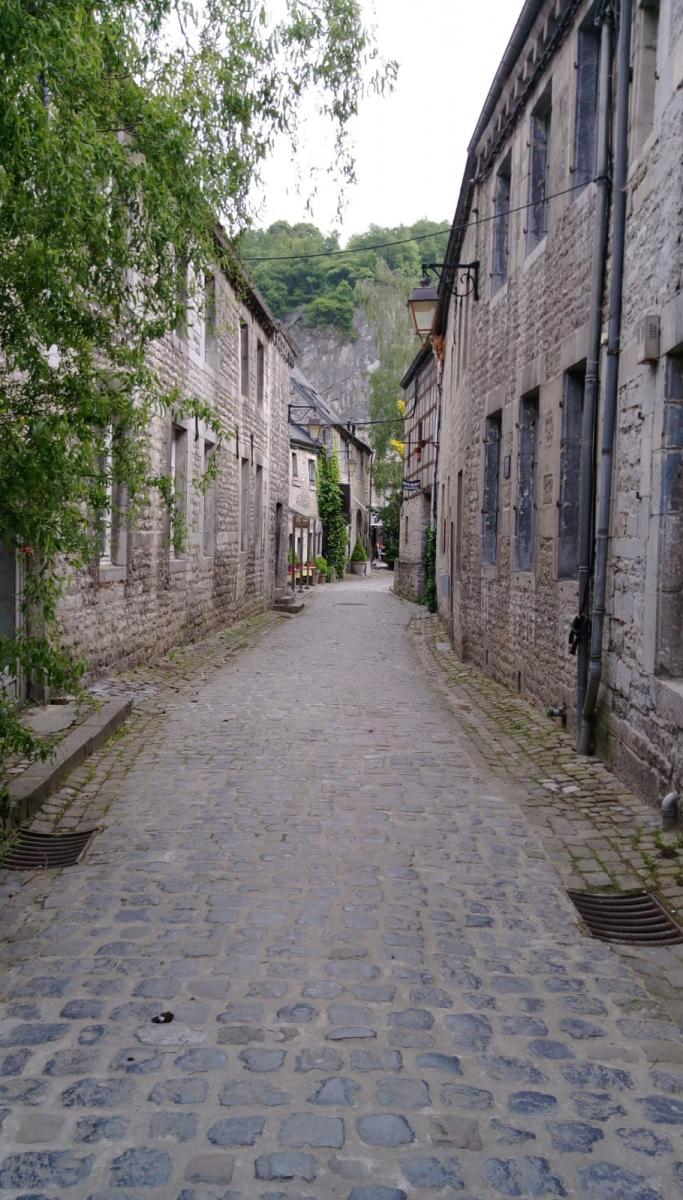
Modern medieval looks of Durbuy.
Durbuy also has a rich history, visible through its local natural, immaterial and material heritage, and which developed long before it was even called Durbuy (Ville de Durbuy, n.d.). It is, therefore, no wonder that tourism started to develop early on. However, some periods were more important for the town than others. For example, Durbuy was already an important location for commerce and defense purposes and was therefore proclaimed a city in 1331 by John I, Count of Luxemburg, making it the smallest city in the world for quite some time (d'Ursel, n.d.). The current castle is not the original one. It has already been rebuilt three times and was restored on several occasions (d'Ursel, n.d.).
As Dujardin (2008) explains, another important period for Durbuy was when tourism started to develop during the 19th century. It was visited by higher social class tourists seeking to reconnect with nature and to experience a rural lifestyle. Tourism was however not developed well enough to accommodate the growing numbers of visitors, so intensification of tourism took place after the first world war, when leisure time became more common. From that moment on, infrastructure improved considerably, especially in the accommodation and leisure fields. In the second half of the 20th century, the expansion of the tourism industry continued with a focus on developing a variety of activities. Although it was still visited by upper-class visitors, the destination also started to accommodate middle class visitors in increasingly large numbers. By then, Durbuy had become one of the main destinations in the South of Belgium (Dujardin, 2008).
Unfortunately, in the last few decades, the town has seen a decrease in the number of tourists. Consequently, several businesses have been struggling to remain open and some had to close (Cloot, 2017). The local and regional governments had to find ways to boost the tourism industry again (LaMeuse, 2015). This is not uncommon for rural tourism destinations that started to depend economically mainly on the tourism industry. As Long and Lane (2000) explain, rural tourism is facing a new phase of development. Rural spots used to be a destination for relaxation and reconnecting with nature, but today the focus is more and more on activities and experiences. This influence of globalization requires tourism destinations to adapt, keeping the passive consumption of the rural through relaxation and nature whilst also developing modern activities such as sports and amusement parks to meet a more active demand (Butler, Hall & Jenkins, 1998).
As Durbuy was facing issues concerning its vitality as a destination, the municipality tried to find new ways to rejuvenate tourism (Butler, 1980). In reaction to its former status as a mass tourism destination, the local and regional governments have tried to implement a form of 'green' and 'rural' tourism. This niche market would also help Durbuy keep a competitive adventage (Dujardin, 2008; Hassan, 2000). However, this didn't prove enough to help businesses with financial difficulties. Therefore, when Marc Coucke made his offer to these businesses, they simply couldn't refuse (Cloot, 2017).
"Coucke Land"
Marc Coucke is a Flemish billionaire, who owns several key businesses and projects in the Benelux and who has promised to re-invest his money into the Belgian economy. In Durbuy, Coucke saw an opportunity. His plan was to create a theme park based on nature, adventure and authenticity which spreads over 500 hectares, making it larger than Disneyland and the largest natural park of Europe. He planned on spending around 100 million euros to create this park and develop the town (LaMeuse, 2016). The area is thus used for leisure and amusement and the attractions are based on nature and adventure, and use the natural and cultural resources available in order to enhance the local economy. All this to attract middle and upper class visitors as well as tourists on a business trip, who will all find something they like in Durbuy (Sudinfo.be, 2016). In developing this project, Coucke received support from the local mayor, Philippe Bontemps, and two other business partners, Wout Bru and Bart Maerten, who participate in the decision-making process and manage the developments in Durbuy (L'Avenir, 2018).
In order to create the park, plans were developed which require considerable changes to take place. Coucke started off buying two adventure-related sports businesses and invested substantial amounts of money in innovating them. The two businesses were then merged, to create the theme park. The billionaire then bought the land needed: he bought two restaurants which were opposite each other and by combining these aimed to create a high-class restaurant and wellness hotel. He also bought several pieces of land around the town to develop his nature tourism plans and to create more accommodation opportunities. He started to buy buildings in the town center for high-quality and locally produced retail and buildings outside the town center for various other purposes. Two old campsites were transformed into glamping, a castle was prepared to house accommodation, and plans were announced for further investments in and around Durbuy for food and drink and accommodation development. Finally, he bought two golf courses nearby as well as the hotel located on one of them. This is only a brief summary of his investments which are probably still growing as we speak (L'Avenir, 2018).
Physical changes taking place in Durbuy for Coucke's project.
To develop his plans, Coucke had to convince the local government of his plans. As most of his transactions were dealt with in private, from business man to business man, the municipality wasn't able to restrict his purshases. However, in order to make all the changes needed for the park and his smaller projects, permission was needed from the municipality, the urbanism service, and some of the organizations protecting nature such as Natagora (RTL, 2016).
Coucke argues that his plans will be beneficial on three levels: economic, social and environmental. His plans shouldgive a boost to local and regional economy. Approximatively 300 new jobs should be created, some seasonal and some permanent. Local products and businesses would be used, including for the infrastructure improvement itself, diversifying the industries in and around Durbuy. Indoor activities would be built in order to deal with the issue of seasonality. The numbers of visitors would increase to 10.000 a day, and their expenditures would increase considerably (Meulders, 2017). On the environmental level, Coucke promises to develop the park to become sustainable and zero-waste, for example by doing away with all activities that requiring an engine. Electric cars, trains, and cableways would be favored. Visitors and locals would then be able to enjoy the purity that nature has to offer. Additionally, he plans on placing solar panels and five wastewater treatment plants which will also be beneficial for the local community (Meulders, 2017). At the sociocultural level, job opportunities would emerge for for the locals, with greater diversity of businesses in the city center, less focused on food and drink only, better parking opportunities, improvements in the existing infrastructure, and cultural development such as the promotion of traditional and local products, the creation of an arts museum, etc (Meulders, 2017). Finally, he wants visitors to be able to experience the authentic town-center of Durbuy without it looking like a mass tourism destination. This would make it also more pleasant for the local community and attract more residents who would stay and work permanently in the town instead of live elsewhere (LaMeuse, 2017).
Marc Coucke's plans seem to have charmed quite a lot of people such as business owners in Durbuy, part of the local government, as well as the mayor, the regional and national governments, and some in the local and regional communities. Yet, not everyone in the community or in local government is convinced (Meulders, 2017). Some expressed concerns through public acts such as open letters and manifestations or through politics, such as the anti-Coucke party. Coucke's reaction was that they only delay the project but do not stop it (Meulders, 2017).
Where does this lead?
The situation in Durbuy at the moment is thus very dynamic, and highly mediatized throughout the entire country. While many are charmed by this project, a considerable number of people is against it. Not only are they uncomfortable being part of what would resemble a game of Monopoly, but they are also alarmed by the passivity of the local government and the local community to what is happening to them (RTBF, 2017). Yet, it would also seem that to some extent, Coucke, the local community, and the other stakeholders all try to achieve the same goal of economic success, environmental sustainability and better conditions for the local community. Where did it go wrong? The remainder of this paper will take a closer look at the dynamic interplay between the economic, social and environmental aspects of Durbuy. Doing so permits a better understanding of why there is a mismatch between the perspective of opponents and that of Marc Coucke and his business partners, resulting in tensions.
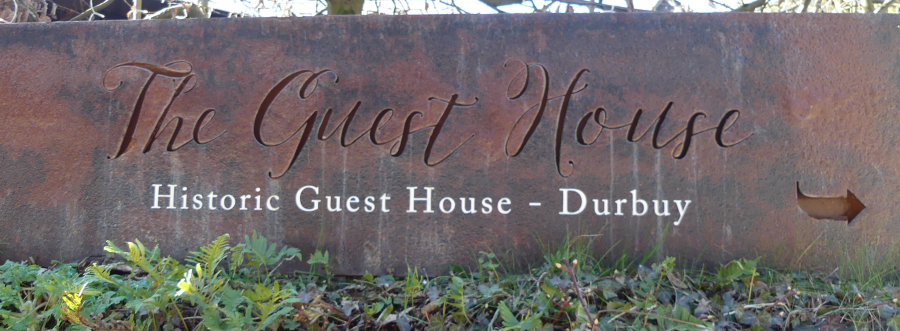
Sustainable tourism development?
For most of the stakeholders involved, it seems that the central topic of discussion is that of sustainability. Sustainability is defined as practices which “meet the goals of the present without compromising the ability of future generations to meet their own needs” (WCED, 1987). For some destinations, tourism is one of the main (or only) sources of economic income. Local, regional and national governments choose to rely on tourism for economic development. This can lead to a destination being dependent on the tourism industry and this makes it more vulnerable to external forces (Saarinen, 2003). This is why the development of sustainable tourism is important. It has been perceived as a possible solution to current social, environmental and economic issues for certain areas. As the tourism industry mainly depends on the natural resources and the cultural attractions of a destination, developing in a way that respects these is important for the tourism industry (Cooper, 1995; Murphy, 1994). Sustainable tourism development aims at three goals according to Hall (2008): “the conservation of tourism resource values; enhanced experiences of the visitors and their interaction with the tourism resources; and the maximization of the economic, social and environmental profit to stakeholders in the host community (Hall, 2008). These goals need to be implemented as much as possible in the everyday decision-making by stakeholders in order to meet the following criteria: strategic and long-term orientation in planning, stakeholder participation in decision-making, and community involvement (Simpson, 2001).
As Durbuy is one of the main attractions in the south of Belgium, investing in the tourism industry is not only beneficial for Coucke but is also supported by most of the local government, as well as the regional and national governments, due to the economic opportunity it offers. However, to develop the economy through tourism, the tourism industry of Durbuy is dependent on its natural and cultural resources. Not only does it differentiate the destination from other towns in the region, this is also what gives Durbuy a competitive advantage. Aware of the importance of the cultural and environmental resources of Durbuy and the interplay between them, it seems that all stakeholders focus on the sustainable development of both types of resource. By developing activities and services focussed on nature and on cultural resources, Coucke has proven to be aware and motivated to create a tourism of quality and awareness. Most services and activities he wants to offer are based on the natural and cultural resources available, which consequently can also develop the local and regional economy sustainably. Not only does this improve the tourist experience, it also improves the quality of life of the locals. This matches the three goals of sustainable tourism development mentioned by Hall (2008). The local community is also aware of the importance of developing its local economy through tourism, but they also want to preserve the natural and cultural resources they have. However, the natural and cultural resources of Durbuy are not only there to develop tourism: they are also a part of their heritage, identity and lifestyle (Hall, Mitchell & Roberts, 2003). There is thus a common aim to develop social, natural and economic sustainability in Durbuy, shared by the different stakeholder groups. In spite of this, there are other factors that create a gap between those pro and those against Coucke's project.
This gap might have been created when the local community did not get included in the decision-making process. Stakeholder participation is important in sustainable tourism development to match the values, attitudes and lifestyles of the local community, but this aspect has often been overlooked in practice (Ruhanen, 2004), as was the case in Durbuy. In the beginning, the local community wasn’t even aware of what the park would actually be, which led to protest manifestations. A presentation of the plans helped to change the attitudes of some of the locals, but this did not sway all community members. Those who were not convinced felt that Coucke and the local government should have shared information and asked for feedback before all plans were set in stone during closed meetings. Even when the community showed their concerns and asked for a study that would look at at the actual impacts the project would have on the region, the municipality did not take this into consideration (Adam, 2016). Another worry of the local community was the passivity and inactivity of the local government in regulating the numerous transactions made by Coucke, while some of his plans and actions were considered incoherent, and in some cases even illegal. They wondered whether the municipality gave everything away too quickly (RTBF, 2017). Additionally, the local community questioned the extent to which they will be able to take part in the project. Neither the local government, nor Coucke has made plans to include active participation by the local community (RTBF, 2017). This jeopardizes sustainable tourism development, because while the environmental and economic development opportunities are there, social sustainability has not been respected enough. A consequence of this is that the values, attitudes and practices of the local community are not reflected in the project, resulting in a loss of identity and a feeling of disrespect (Hall, 2008). How sustainable is this project then really?
Differences in values, attitudes and practices
Another possible factor for tensions between the two groups is the mismatch of values, attitudes, and practices of both groups. Hollinshead (1999) explains that new developments often represent the values of the local and non-local tourism industry, but not that of the local community. As a result, the values and identity of the local community are not necessarily represented. Additionally, as Urry (1990) explains, if a large-scale tourism industry starts to develop in a rural setting, the developments will not be based on the local interests and identity but on the demand side, which is usually urban. Therefore, urban values are applied to the rural setting, resulting in a mismatch. Consequently, changes occur in tourism management, relationships between stakeholders, etc. (Roberts & Simpson, 2003). This can be observed in the case of Durbuy, where tourism development does not come from the local tourism industry, nor from the local community: urban values are applied to the rural setting through different and new uses of the space. For example, the theme park offers activities such as a tubing slide, lasergame or escape rooms which are not the type of activities usually found in rural areas. In accommodation development, the theme park also offers ‘Bali tents’ and ‘Shaka tents’ which are not representative of the local culture. Furthermore, the town center would be valorized through reducing and changing the types of businesses present, but these are not necessarily locally produced. Even though the aims of Coucke and the local community are similar, they seem to represent different values (non-local vs. local) (Little, 1999). Still, some question whether this has really anything to do with differences in values and practices, or whether the criticism exists just because Coucke is a Flemish business man (RTL, 2017).
Additionally, the way Coucke plans to develop the activities within the park and around the town shows a form of McDisneyization which does not match local values and practices of tourism development. It refers to the rationalization of a destination and its culture in order to make it an idealized, safe and easy to consume vacation package (Ritzer, n.d). Tourists seek for a place where activities, accommodation, food and drink, etc. are all concentrated into one place and that place is characterized by controllability, efficiency, theming, etc. such as Barcelona, Venice or even Amsterdam. The characteristics of McDisneyization are what permit profit maximization of a tourist destination (Ritzer, n.d.). This is also reflected in Coucke’s project where he owns and thus can control most of the amenities available at the destination (accommodation, catering, transport, retail, and entertainment) and where he wants to push tourists to spend more time and money at the destination. As Ritzer (n.d.) says, this results in inauthenticity and a loss of local identity. By doing so, Coucke not only imposes a radical change of concept but also of practice to the town and its community which used to have very different planning methods (Cloot, 2017).
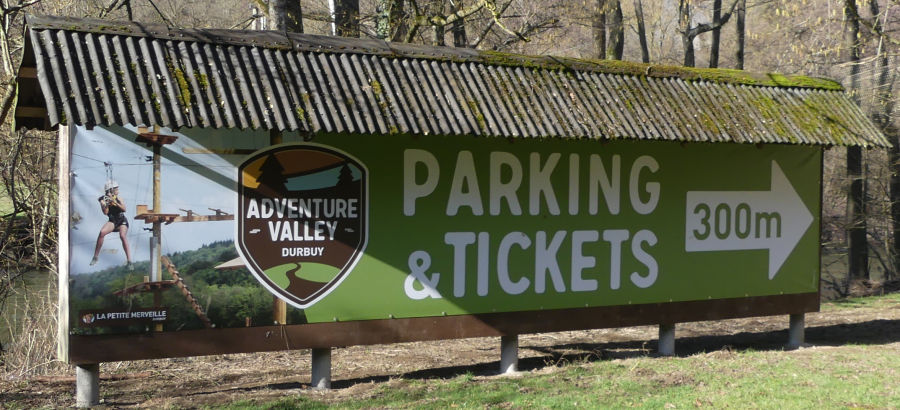
Entrance of Durbuy.
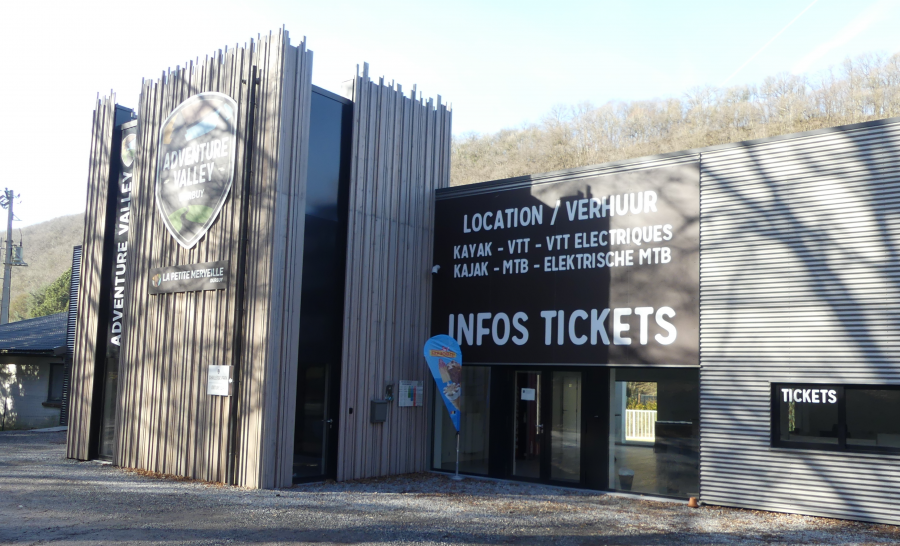
Ticket selling point of Coucke's theme park.
Finally, there is a mismatch in the perspectives of both groups. While Coucke takes a more global and innovative approach to tourism and sustainability, some members of the local community are much more concerned with a local and traditional approach (Little, 1999). The local community sees the changes that are taking place from a local perspective. Therefore, those who are concerned with the local environment see the changes taking place in their local area. They see the direct impacts on them and are not interested in Coucke's global vision . An example would be the cutting of trees, and aesthetic changes in the town, which directly impact the authenticity of Durbuy. On the other hand, Coucke makes such changes in order to achieve the same goals but on a higher scale, such as making a project valorizing the local and regional environment, or improving the aesthetic of the town for a better image. Despite the good intentions, Coucke imposes a radical change of scale.
Conclusion
This paper looked at Durbuy, a famous town in the Belgian Ardennes, known for its cultural, historical, and natural heritage. However, the last few years Durbuy has become known for Marc Couke’s project: creating a theme park based on nature, authenticity and adventure. While some are charmed by these plans, quite a few members of the local community are concerned about the impact this project will have on the social, economic and environmental character of the place. Coucke and the community both share the same goal of achieving sustainable tourism development, but their preferred ways of getting there and their ultimate vision differ considerably.
One reason why there is such a difference in perspectives is the differences in values, attitudes, and practices. Coucke's way of working and planning and his ideas are more global, innovative and urban than those of the local community. Although Coucke shows a sincere interest in developing sustainable projects and initiatives in Durbuy, a part of the community fears the loss of local identity and authenticity, the increase of already existing mass tourism and the monopoly Coucke has on the town and the local government. Although Coucke tried to reassure the local community that this would not be the case, this is not reflected in the way he considers and co-operates with the local community. It is understandable that such a small community can feel under threat and powerless regarding Coucke and the situation. Sustainable tourism development also requires the respect and involvement of the local community in the project. Can we therefore really talk about sustainable tourism development in Durbuy or is it just a way to gain support from key stakeholders in order to add "the smallest town in the world" to his game of Monopoly?
Marc Coucke's project is almost coming to an end. It is therefore very difficult to give suggestions as to how to improve the situation in Durbuy. The local community's right to be involved in the planning of activities which will impact their daily life has been violated by not being informed, and not being invited to decision-making meetings. Nonetheless, it is never too late to improve communication between Marc Coucke and his business partners and the local community, for example to set-up a community-involvement-plan (Simmons, 1994). By becoming more transparent, inclusive, integrated and democratic, this project could well become sustainable on all three pillars. It could even change the negative attitudes part of the community has against the project and this could help avoid long-term social issues such as irritations, frustrations, a further division of the community, and tensions between locals and tourists (Singh, Timothy & Dowling, 2003).
A trend in the Belgian Ardennes?
Although it might already be too late for Durbuy to do it right, this is not the case for La Roche-en-Ardennes. Durbuy is not the only area in the Belgian Ardennes that has transformed in order to accommodate and entertain a new wave of tourists. While writing this paper, a new plan was published by the town of La-Roche-en-Ardennes to make important changes in the city center. La Roche-en-Ardennes, also called the ‘Jewel of the Ardennes’, is a small town 30 minutes away from Durbuy. Just as Durbuy, La Roche has a modern medieval look and a relatively high dependence on tourism. Over the last few years, some work was already undertaken by the municipality to improve infrastructure, but they wanted to do more. Together with an anonymous partner, the municipality of La Roche plans to transform a part of its center into a pedestrian zone, underground parking and a three to four-story hotel. All of this is supposed to blend in with the rest of the town. The aim is to attract more visitors and to have them walk all the way through the center along the river and enjoying the shopping opportunities (Orianne & Lecoyer, 2019).
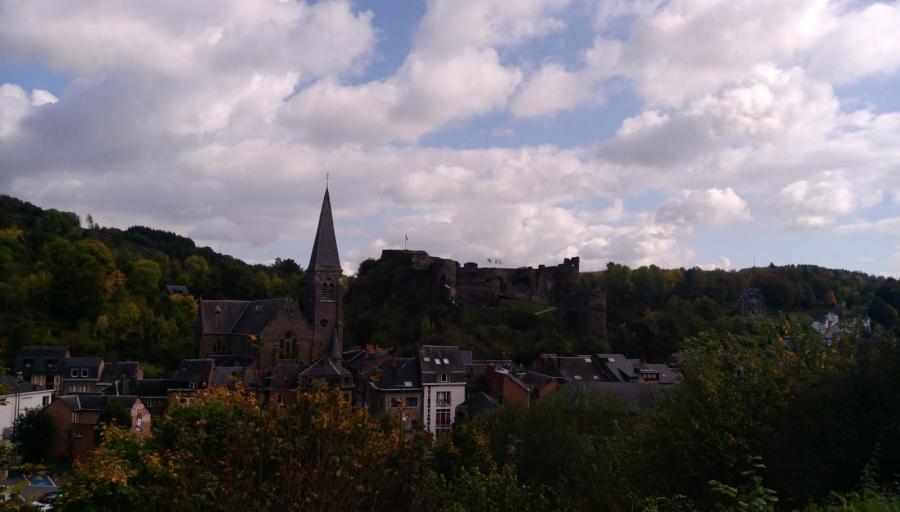
Vue of La Roche-en-Ardennes and its castle.
While the municipality claims this is a very important project that would greatly benefit a town in need of economic development, an important proportion of the inhabitants of La Roche doesn’t feel so enthusiastic about these plans and has massively expressed its opinions on Facebook. Although certain aspects such as improving the central square and connecting it to the river seem to be appreciated by the locals, they doubt the hotel can blend in with the rest of the buildings and they don’t want to lose their view of the river, or their parking spot. Most of all, they are skeptical about this anonymous investor and fear that this will result in a 'Durbuy 2.0', as again communication with the community did not take place. Therefore, several citizens put their thoughts together and proposed an alternative plan to the municipality which would reflect a little more the local values and perspective. It is unknown whether the alternative has been taken into consideration by the municipality, it is however sure that changes will happen. Durbuy and La Roche are only two examples of this trend, other places such as Achouffe and Orval also share similar characteristics. Will this be the future for the Belgian Ardennes where economic development is greatly needed?
References
Adam, B. (2016). Pétition…contre le méga projet de Marc Coucke, LPM events et Philippe Bontemps. [Blog].
Butler, R.W. (1980) The concept of the tourist area life-cycle of evolution: implications for management of resources. Canadian Geographer 24 (1), 5-12
Butler, R., Hall, C. M., & Jenkins, J. M. (1998). Tourism and recreation in rural areas.
Cloot, A. (2017). Durbuy aux mains de Marc Coucke. Le Soir.
Cooper, C. (1995). Strategic planning for sustainable tourism: The case of the offshore islands of the UK. Journal of sustainable tourism, 3(4), 191-209.
Dujardin, S. (2008). Tourisme et la valorisation des ressources territoriales en milieu rural. Bulletin de la Société géographique de Liège, 50, 27-35.
Hall, C. M. (2008). Tourism planning: Policies, processes and relationships. Pearson Education.
Hall, D., Mitchell, M., & Roberts, L. (2003). Tourism and the countryside: dynamic relationships. New directions in rural tourism, 3-15.
Hassan, S. S. (2000). Determinants of market competitiveness in an environmentally sustainable tourism industry. Journal of travel research, 38(3), 239-245.
Hollinshead, K. (1999). Surveillance of the worlds of tourism: Foucault and the eye-of-power. Tourism Management, 20(1), 7-23.
L'Avenir. (2018). Les investissements de Marc Coucke en Wallonie et à Bruxelles. L'avenir.
La Meuse. (2015). Booster le tourisme durbuysien. La Meuse.
La Meuse. (2016). Marc Coucke achète Durbuy Adventure. La Meuse.
La Meuse. (2017). Les projets au cœur de Durbuy. La Meuse.
Little, J. (1999). Otherness, representation and the cultural construction of rurality. Progress in Human Geography, 23(3), 437-442.
Long, P., & Lane, B. (2000). Rural tourism development. Trends in outdoor recreation, leisure and tourism., 299-308.
Meulders, R. (2017). Durbuy: Marc Coucke annonce un parc d'attractions plus grand que Disneyland. La Libre.
Murphy, P. (1994). Tourism and sustainable development. In Global Tourism: The Next Decade, ed. W.F. Theobald, pp. 274–90. Oxford: Butterworth.
Orianne, O., & Lecoyer, G. (2019). La Roche : le futur visage du Quai de l’Ourthe[Image]
Ritzer, G. Sociologist George Ritzer on McDisneyization and Post-tourism [In person]. (n.d.).
Roberts, L., & Simpson, F. (2003). Encouraging responsible access to the countryside. New directions in rural tourism, 67-79.
RTL. (2017). Une habitante de Durbuy a "peur" de la venue de Marc Coucke: sera-t-elle rassurée par l'associé du milliardaire?. RTL.
RTBF. (2017). Durbuy : non à un "Marc Coucke Land" !. RTBF.
Ruhanen, L. (2004). Strategic planning for local tourism destinations: An analysis of tourism plans. Tourism and Hospitality Planning & Development, 1(3), 239-253.
Saarinen, J. J. (2003). The transformation of a tourist destination: Theory and case studies on the production of local geographies in tourism in Finnish Lapland.
Simmons, D. G. (1994). Community participation in tourism planning. Tourism management, 15(2), 98-108.
Simpson, K. (2001). Strategic planning and community involvement as contributors to sustainable tourism development. Current issues in Tourism, 4(1), 3-41.
Singh, S., Timothy, D. J., & Dowling, R. K. (Eds.). (2003). Tourism in destination communities. Cabi.
Sudinfo. (2016). Marc Coucke et son ambitieux projet à Durbuy: "Apporter une plus-value à la région et créer de nouveaux emplois". Sudinfo.
Urry, J. (1990) The Tourist Gaze: Leisure and Travel in Contemporary Societies. London:Sage.
d'Ursel, J. (n.d.). Historique du Château de Durbuy.
Ville de Durbuy. (2019). Terre d’histoire...
WCED, S. W. S. (1987). World commission on environment and development. Our common future.